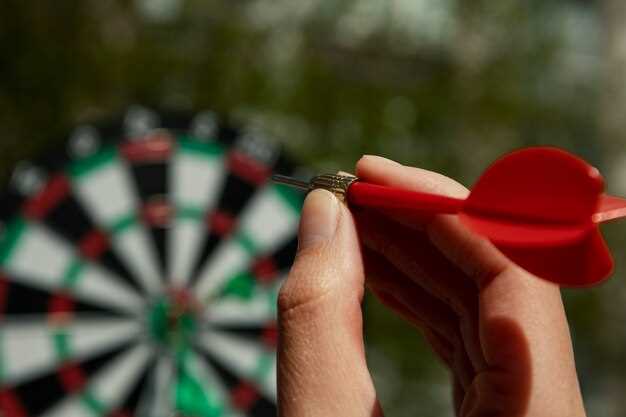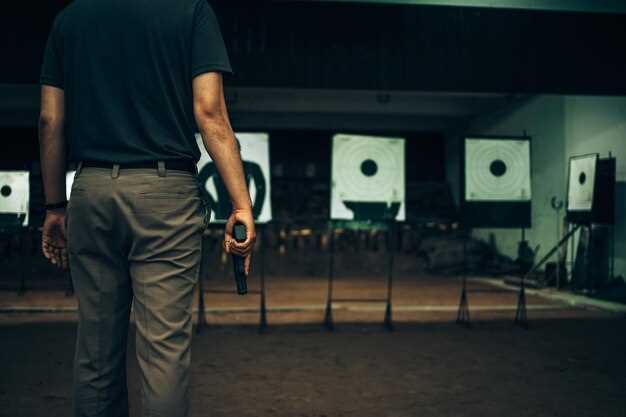
When it comes to archery, selecting the right arrow is crucial for achieving optimal performance in various shooting scenarios. With a wide array of types available, each designed for specific purposes, understanding how to choose the right one can significantly impact your accuracy and overall experience. Whether you’re targeting for sport, hunting, or recreational shooting, the right arrow can enhance your skills and boost your confidence.
The market offers a diverse range of arrow types, including carbon, aluminum, and wooden options, each with unique characteristics that cater to different shooting needs. Carbon arrows are known for their lightweight and durable nature, making them ideal for high-speed shooting. In contrast, aluminum arrows offer greater stability and straightness, providing excellent performance in target practice. Wooden arrows, while traditional, still hold their ground for enthusiasts who value craftsmanship and nostalgia in their shooting experience.
It is essential to consider factors such as draw weight, arrow length, and shaft diameter when selecting an arrow. These specifications directly influence how well the arrow performs in the field or on the range. By taking the time to understand your shooting requirements and the various types of arrows available, you can make an informed decision that elevates your archery practice to new heights.
Understanding Different Arrow Types: Materials and Designs

When selecting arrows for specific shooting requirements, understanding the various materials and designs available is crucial. Different arrow types impact performance, accuracy, and overall shooting experience, making it essential to choose wisely based on your needs.
Arrows are commonly made from three primary materials: wood, aluminum, and carbon. Wood arrows are traditional and often used in historical archery. They offer a classic feel but may be less consistent in performance compared to other materials. Aluminum arrows provide durability and are resistant to bending, ensuring consistent flight characteristics. They are favored for their accuracy and are often used in target and field archery. Carbon arrows are lightweight and can be designed with various stiffness options, making them popular for both target shooting and hunting. Their strength-to-weight ratio allows for optimized speed and precision.
Besides materials, arrow designs also play a significant role. Spine stiffness is a vital aspect to consider, as it affects how well an arrow behaves during flight. Tuning the arrow to the bow’s draw weight is essential for achieving optimal performance. A well-tuned arrow will stabilize better in flight, leading to enhanced accuracy.
Additionally, arrow length and fletching designs can influence performance. Shorter arrows may offer faster speeds, while longer arrows can provide better stability. The choice of fletching options, such as vanes or feathers, impacts drag and flight trajectory, further aiding in fine-tuning for specific shooting contexts.
In summary, understanding the various arrow types and their materials is pivotal for anyone serious about archery. Factors such as spine stiffness, length, and fletching design should be considered carefully when selecting arrows. A well-matched arrow not only enhances shooting accuracy but also elevates the overall archery experience.
Matching Arrow Specifications to Bow Setup
When it comes to archery, ensuring that arrow specifications align with your bow setup is crucial for optimal performance. This alignment affects accuracy, stability, and overall shooting experience. Understanding the various elements that contribute to arrow tuning can significantly enhance your effectiveness in the field or on the range.
Draw Weight and Arrow Spine are two primary factors to consider. The spine of an arrow refers to its stiffness, which should match the bow’s draw weight. A bow with a higher draw weight requires stiffer arrows, while lower draw weights necessitate more flexible options. Using the correct spine is essential for achieving proper arrow flight and minimizing issues like planing or porpoising.
Arrow Length also plays a vital role in tuning. Arrows that are too short can lead to safety hazards, while those that are excessively long may introduce unnecessary drag and reduced accuracy. It’s important to measure correctly and choose an arrow length that complements your draw length, ensuring that the tip of the arrow does not extend beyond the front of the bow when drawn.
Point Weight is another specification that must be matched appropriately. Heavier points can help with accuracy and stability, especially in windy conditions, while lighter points may offer faster arrow speeds. Experimenting with different point weights can aid in fine-tuning your setup to achieve preferred performance metrics.
Additionally, shaft material adds another layer to the tuning process. Carbon arrows are known for their lightweight and durable properties, whereas aluminum arrows tend to provide greater precision and weight. The choice of material should be based on the specific shooting conditions and personal preferences.
In conclusion, successful tuning of arrow specifications to your bow setup requires careful consideration of draw weight, arrow spine, length, point weight, and shaft material. By paying close attention to these factors, archers can ensure efficient arrow performance and enhance their overall shooting experience.
Impact of Arrow Length on Shooting Performance
The length of an arrow plays a crucial role in determining overall shooting performance, influencing accuracy, stability, and ease of handling. When selecting arrows, understanding how their length affects tuning and shooting dynamics is essential for archers at all levels.
- Stability: Longer arrows tend to have greater stability in flight due to increased inertia. This can lead to improved accuracy, especially at longer distances.
- Draw Weight: Arrow length can affect how the arrow interacts with the bow’s draw weight. A longer arrow can allow for smoother releases, while a shorter arrow may require more precision in tuning.
- Arrow Speed: Generally, shorter arrows may achieve higher speeds due to reduced weight and less surface area exposed to drag. However, this can be at the cost of stability.
- Archery Style: Different shooting styles may require specific arrow lengths. For example, hunters often prefer shorter arrows for better maneuverability in dense environments.
- Tuning Process: Arrow length is a vital factor during the tuning process, affecting spine stiffness, brace height, and overall shooting feel. Proper tuning ensures that the arrow’s flex matches the bow’s characteristics.
In conclusion, the selection of arrow length is integral to optimizing shooting performance. Archers must consider factors such as stability, draw weight, and tuning to achieve the best results. A well-chosen arrow length enhances accuracy and ensures a smoother archery experience.
Choosing the Right Fletching for Various Conditions
When it comes to archery, selecting the appropriate fletching for your arrows plays a crucial role in achieving optimal performance, especially under varying shooting conditions. Fletching not only stabilizes the arrow in flight but also influences its trajectory, making tuning essential for consistency.
In windy conditions, for instance, a larger fletching diameter can provide additional stabilization, helping the arrow maintain a straight path. This is particularly beneficial when shooting outdoors, where gusts can easily affect arrow flight. Conversely, in calm conditions or for indoor shooting, smaller fletching may be preferred as it reduces drag and increases speed, enhancing accuracy.
The material of the fletching also impacts performance. Plastic vanes are commonly used for their durability and resistance to moisture, making them suitable for wet or humid environments. On the other hand, feathers offer exceptional flight characteristics and are lighter, but they can be less effective in adverse weather conditions as they tend to absorb moisture. Choosing the right material based on the expected conditions can further refine arrow tuning.
Another factor to consider is the camber and angle of the fletching. Parabolic fletching provides a good balance of stabilization and speed, making it versatile for various shooting scenarios. For specialized conditions, such as target shooting at long distances, a more pronounced helical fletching can enhance spin, aiding precision.
Ultimately, achieving optimal arrow performance depends on tailoring fletching choices to specific conditions and personal shooting styles. Careful consideration of these factors will enhance your tuning efforts and improve overall accuracy and consistency in your archery experience.
Tuning Arrows for Optimal Accuracy and Stability
In archery, achieving optimal accuracy and stability requires careful tuning of arrows specific to your shooting style and requirements. Different types of arrows serve various purposes, whether for target shooting, hunting, or 3D archery. The tuning process involves adjusting components such as spine, weight, and fletching to enhance performance.
The arrow spine is a critical factor in determining accuracy. Selecting the right spine ensures that the arrow flexes appropriately during flight. For instance, heavier bows typically require stiffer arrows. Utilizing an arrow spine chart can aid in matching arrow types with the draw weight of your bow, ensuring proper flight dynamics.
Arrow weight plays a significant role as well. Lighter arrows can achieve higher speeds but may sacrifice stability in windy conditions. Conversely, heavier arrows provide better penetration and stability, making them preferable for hunting scenarios. Understanding the balance between weight and velocity is essential for optimal performance, and adjusting the point weight can help achieve this balance.
The fletching also contributes to arrow tuning. Different fletch types, such as vanes or feathers, affect the arrow’s drag and stabilization. Experimenting with fletching size and shape can lead to improved flight characteristics. For example, larger fletches may stabilize the arrow quicker, while smaller ones reduce drag for increased speed.
Furthermore, nock orientation can influence arrow flight. Ensuring that nocks are properly aligned with the bowstring can eliminate inconsistencies in flight. Some archers also adjust the position of the nock to tune arrow flight further, minimizing any unwanted yaw or drift.
Lastly, testing arrows through real shooting conditions is crucial. By fine-tuning based on performance, archers can identify which combination of arrow types and tuning adjustments leads to the most consistent and accurate results. Regular practice and evaluation pave the way for mastering the art of arrow tuning, thereby enhancing overall shooting proficiency.
Field Testing: Evaluating Arrow Performance in Real Scenarios

Field testing arrows is essential for archers to understand how different designs and specifications perform under varied conditions. This evaluation assists in achieving the optimal tuning necessary for maximizing accuracy and consistency.
When conducting field tests, it is crucial to assess several performance factors: flight stability, penetration capability, and overall trajectory. Each of these aspects provides insight into the suitability of an arrow for specific shooting environments.
| Performance Factor | Description | Impact on Shooting |
|---|---|---|
| Flight Stability | The arrow’s ability to maintain a straight path during flight. | Affects accuracy; stable arrows reduce the chance of drift. |
| Penetration | The arrow’s capability to penetrate the target upon impact. | Essential for effective performance in hunting or target shooting. |
| Trajectory | The path the arrow takes from release to target. | Influences distance shooting and requires fine-tuning for specific ranges. |
During field testing, it is important to vary shooting distances and conditions, such as wind or incline angles. Collecting data from these sessions helps identify the necessary adjustments for arrow tuning. Adjustments can include arrow length, spine stiffness, and point weight, all of which can greatly affect performance.
Moreover, evaluating arrow performance in real scenarios not only helps in finding the best products but also enhances the archer’s skill through the understanding of their equipment. This practice ultimately leads to improved game integrity and personal satisfaction in shooting endeavors.



